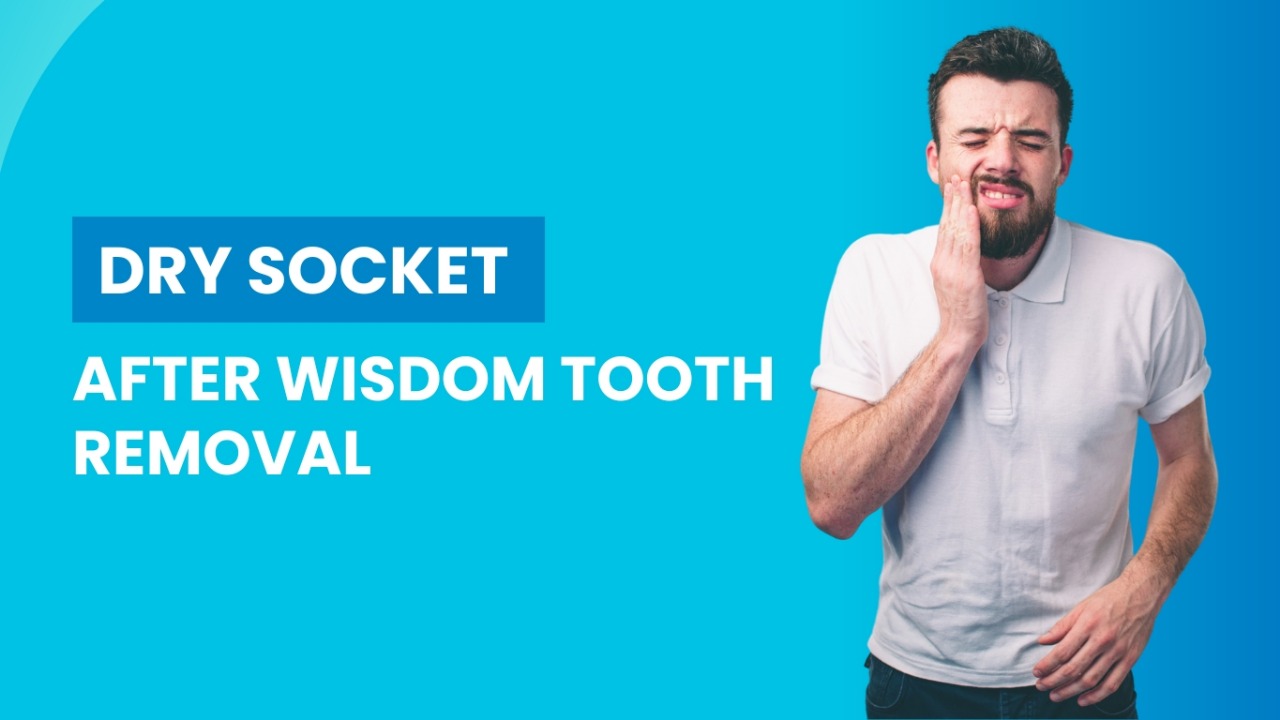So, you have just had your wisdom tooth removed. The hardest part should be over, right?
But then, a few days later, just when you are starting to think recovery is going smoothly, an intense pain steps in. It
doesn’t just stay confined to your jaw, it radiates to your ear, eye, and neck, making daily life miserable.
Sound familiar? You might be facing a post-surgery complication called dry socket.
Wisdom tooth removal is among the most common oral surgeries worldwide. And while the majority of patients heal
without any complications, some end up with pain worse than the extraction itself. That pain is often due to dry socket, a condition that catches many off guard because of how suddenly and severely it strikes.
So, what exactly is dry socket?
After a tooth is extracted, your body naturally forms a blood clot at the extraction site. This clot is crucial, it protects the exposed bone and nerve endings underneath and helps with the healing process. Think of it as nature’s Band-Aid. But sometimes, that clot either never forms or get removed before the area got a chance to heal. When that happens, the bone and nerves are left vulnerable to everything from air to food particles, causing severe pain and an increased risk of infection. This condition, clinically known as alveolar osteitis, is what we refer to as dry socket.
Pain is the first and most common sign that something is wrong. While a certain degree of soreness is normal after oral surgery, the pain from dry socket is sharp, severe, and continuous. It often begins a few days after the extraction,
usually around day two to five, and gets starts getting worse instead of better. Patients often describe it as deep,
sometimes radiating to one side of the face, head, or neck.
Breathing through your mouth may sting, eating becomes difficult, and speaking may feel uncomfortable.
In addition to the pain, you may notice an unpleasant taste in your mouth that doesn’t go away, even after brushing or rinsing. The smell of bad breath will remain, no matter how much mouthwash you use. If you look at the mirror, the socket may appear empty or reveal exposed bone, rather than the dark blood clot that should have remained in place.In rare cases, a mild fever and swollen lymph nodes may accompany the condition, especially if infection sets in.
But what causes this painful condition in the first place?
One major factor is smoking. Tobacco use can interfere with blood flow and clot formation, and the act of inhaling
smoke can dislodge a healing clot. Similarly, sipping through a straw or spitting forcefully creates suction in the mouth that can disturb the clot.
Sometimes, it is simply a matter of poor oral hygiene or excessive tongue action or brushing near the wound site. Even hormonal changes can increase your risk by affecting your body’s clotting ability. In some cases, trauma during surgery or underlying medical conditions may also play a role.
If you suspect that you are suffering from dry socket, the most important thing you can do is act quickly.
This is not a ‘wait and watch’ situation. Contact your dentist or oral surgeon immediately. The treatment is usually
simple but must be done professionally. Here is what you can expect during treatment:
Flushing and cleaning of the socket to remove debris and reduce infection risk.
Application of medicated dressing or paste to reduce the pain and cover the exposed area.
Pain killers or anti-inflammatory drugs might be prescribed if common medicines don’t help.
Your dentist might also suggest antibiotics if there is a risk of infection.
It is essential to keep returning to your dentist for dressing changes if needed, and follow the post-treatment care
guidelines carefully. Most patients start feeling significantly better within 24 to 48 hours of treatment.
Of course, prevention is always better than cure, and with dry socket, a little caution goes a long way.
After a tooth extraction, it is very important to follow post-operative care instructions. While not all cases are avoidable,
these steps can drastically reduce your risk:
Avoid smoking, vaping, or using tobacco for at least 48-72 hours post-surgery.
Don’t use straws or spit forcefully.
Stick to soft foods and chew away from the extraction site.
Rinse gently with saltwater, starting 24 hours after the procedure.
Keep up with gentle oral hygiene, using a soft toothbrush and avoiding the wound site.
The truth is, while dry socket can be extremely painful, it is very manageable with proper care and timely treatment.
Awareness is the key. Knowing what to watch out for and acting quickly can save you from days of discomfort and
complications. If you have had a wisdom tooth removed and the pain doesn’t seem to improve or worse, starts to
intensify, don’t wait it. That pain might be your body’s way of saying it needs help.
Guard the clot like it is gold, because for your mouth, it truly is.
The wisdom is in prevention, but healing starts with recognition. So, listen to your mouth, respect the recovery process,and don’t let dry socket turn your dental story into a painful journey.

